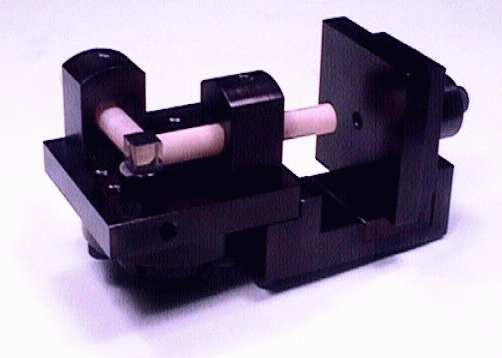Optics in Computing
Concept
Future high-performance computing systems will work by merging electronic and optical technologies. While mature electronic devices can efficiently perform data processing on a single chip, optics can be used to overcome the inter-chip interconnection bottleneck on multi-chip modules (MCM) and also between printed circuit boards (PCB) by providing high-bandwidth, high connectivity and high density communication channels. Intra-chip (static or reconfigurable) optical interconnections are also of interest, for instance for reducing wiring congestion and giving flexibility to the interconnection topology.
Following the design philosophy of Vision Chip, we have been studying two-dimensional arrays of optoelectronic integrated single-instruction multiple-dimension (SIMD) elementary processors having independent optical inputs as well as optical outputs thanks to arrayed vertical-cavity lasers (VCSELs). The OCULAR architecture (Optoelectronic Computer Using Laser Arrays with Reconfiguration) consist on pipelining several such processing arrays, resulting in a system with tremendous processing bandwidth. We have been studying systems in which the parallel optical interconnections between the pipelined processing arrays are fixed or reconfigurable, space-variant or space-invariant. We proposed, designed and tested reconfigurable holographic interconnections using spatial-light modulators, guide-wave based fixed interconnections (using fiber bundles) or mechanically reconfigurable interconnections using movable blocks of stacks of printed light-wave circuits. At present, we are considering nanosecond-reconfigurablity using integrated semiconductor optical gates.
Applications of such ultra-high bandwidth, densely interconnected and pipelined opto-electronic architecture lie, among others, in the field of optimization and learning machines, information retrieval in huge-databases, real-time image processing, processing of data on parallel confocal microscope systems, etc. Since the elementary processing and routing of optical signals required in next-generation optical routers is also possible using OCULAR, we recently ventured on the field of optical circuit and packet switching.

|

|
Movie
Research Topics
Optical Networking
- Load Balanced Optical Packet Switch using Fiber Delay Line Buffers (2004-)
- Buffered Multistage Interconnection Newtwork (MIN) for packet switching (2003-)
- Unbuffered MIN for circuit-switching on supercomputers (2003-)
Optics in Computing
- Real-time image processing with OCULAR-II: Quad-tree compression (2001-2002)
- Parallel Confocal Laser Microscope System using Integrated Parallel Optical Devices (2000-2002)
- Algorithms for an Optical Parallel Interconnected Architecture (1989-2002)
- Optical Associatron: An Optical Neural Network (1989-1991)
Integration and Alignment of Optical Interconnection Systems
- Folded wave-guide based permutation modules for multistage interconnection networks (2002-2003)
- Real-Time Alignment Using Mechanical Dynamics of Optical Interconnection Systems (2002)
- Simple integration technique to realize alignment-free, plugable parallel optical interconnects (2001-2003)
- Analysis and Characterization of Alignment for Free-Space Optical Interconnects Based on Singular-Value Decomposition (1997-2000)
- Compact chip-to-chip parallel interconnections using GRIN rod lenses (1997)
Reconfigurable Interconnections & Optical Switches
- Guide-wave based, integrated semiconductor (SOA/EA) elementary 2x2 switches (2002-)
- Electromechanical / electro-optically reconfigurable interconnects using wave-guided permutation modules (2002-2003)
- Free-space reconfigurable parallel interconnects using LCD technology (1996-2001)



